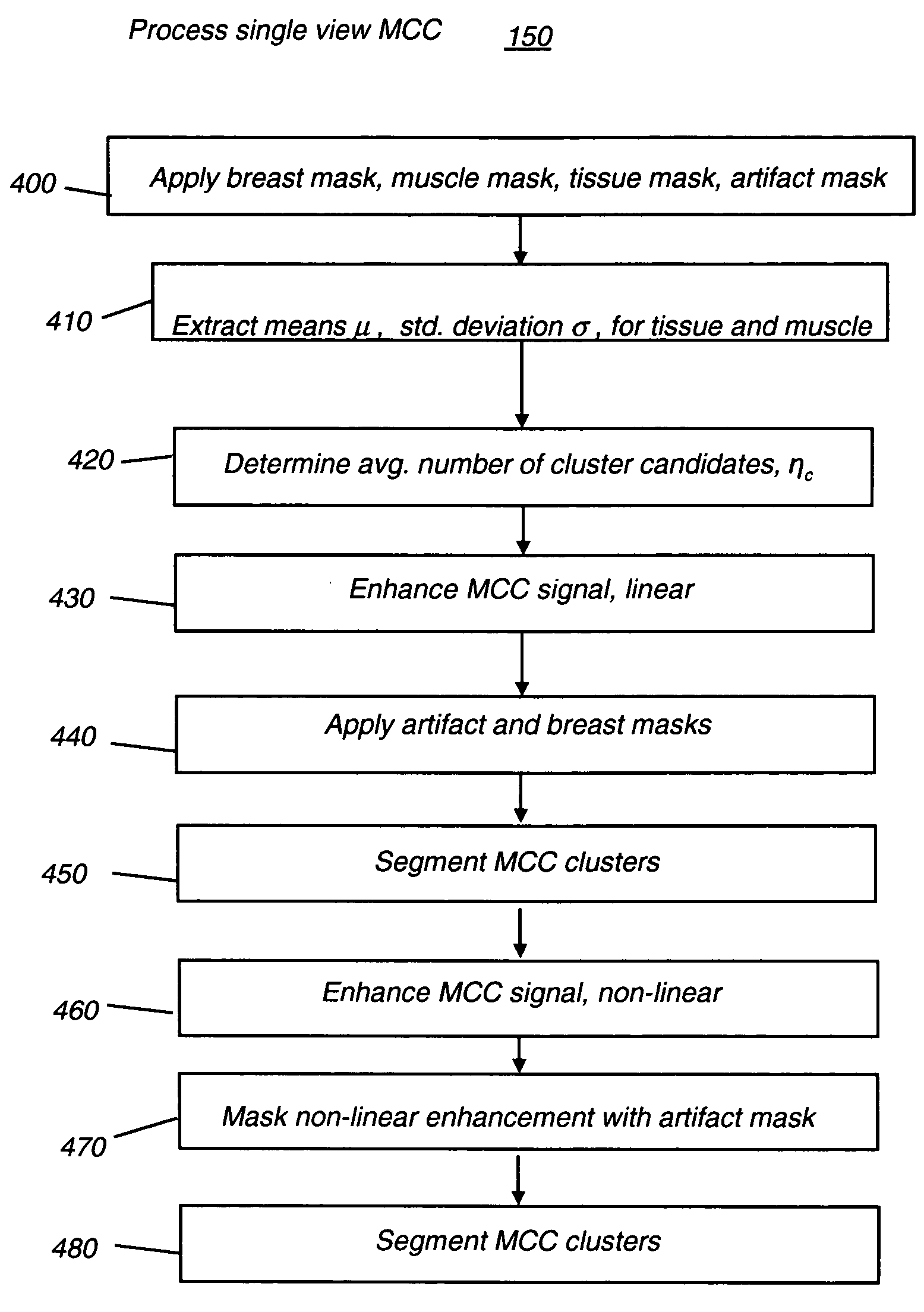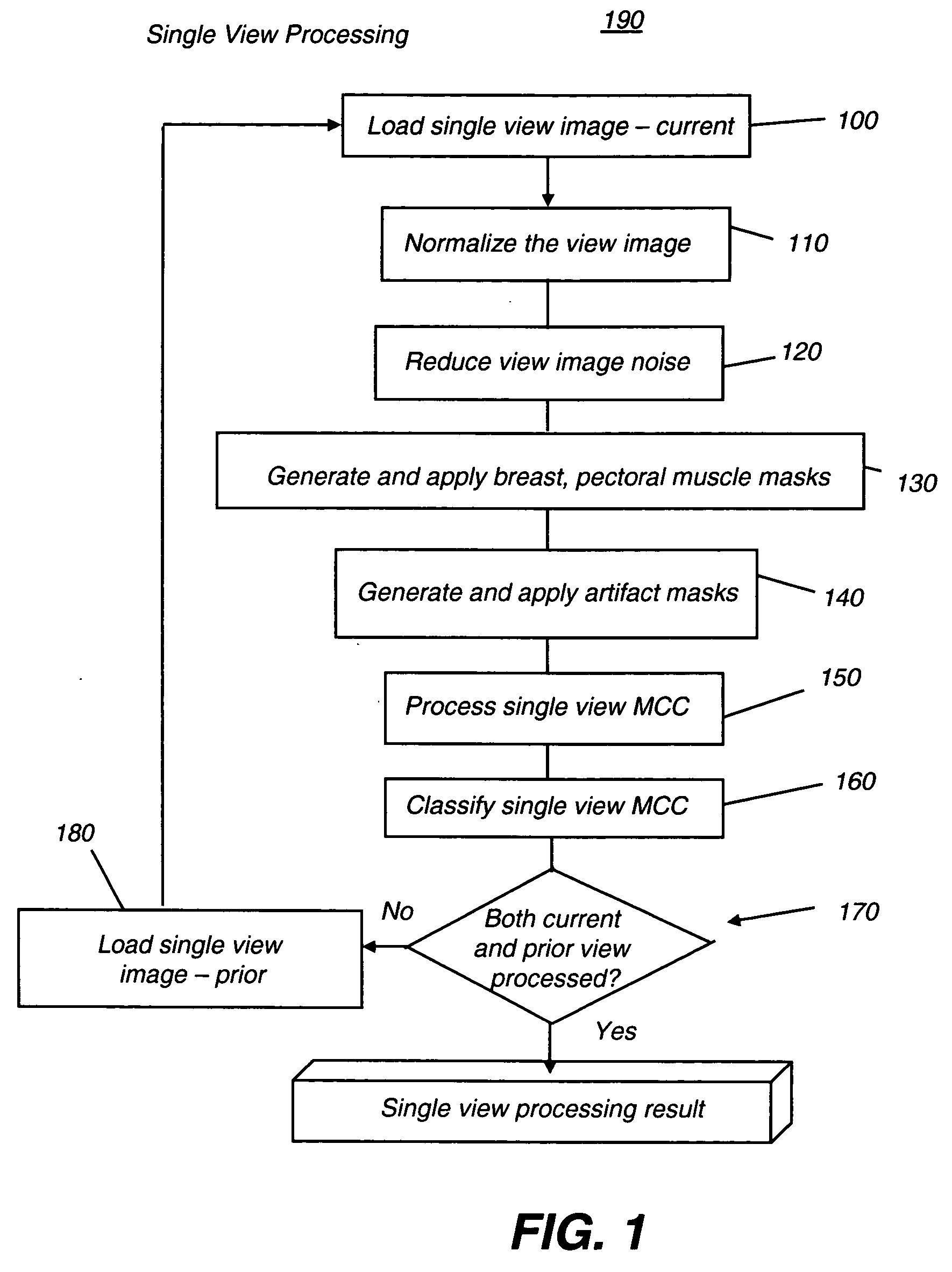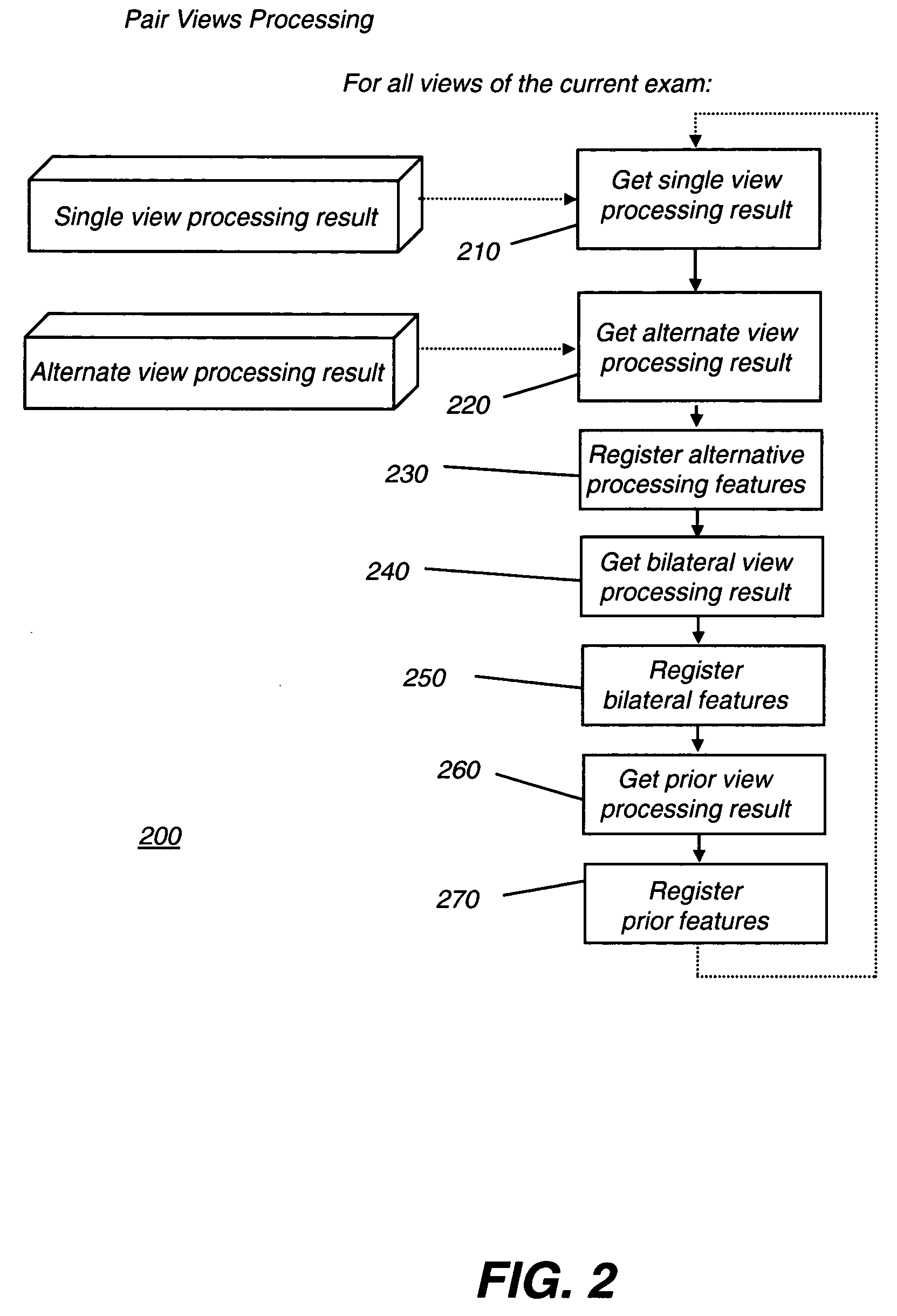Computer aided detection of microcalcification clusters
a microcalcification and cluster technology, applied in the field of medical image analysis, can solve the problems of poor image quality, adversely affecting the percentage of correct results obtained from the cad system, improper positioning of patients, etc., and achieve the effects of enhancing artifact-masked cropped images, reducing edge effects, and reducing image nois
- Summary
- Abstract
- Description
- Claims
- Application Information
AI Technical Summary
Benefits of technology
Problems solved by technology
Method used
Image
Examples
Embodiment Construction
[0049] The present description is directed in particular to elements forming part of, or cooperating more directly with, apparatus in accordance with the invention. It is to be understood that elements not specifically shown or described may take various forms well known to those skilled in the art.
[0050] It is noted that the method of the present invention uses hardware and software components, but is independent of any particular component characteristics such as architecture, operating system, or programming language, for example. In general, the type of system equipment that is conventionally employed for scanning, processing, and classification of mammography image data, or of other types of medical image data, is well known and includes at least some type of computer or computer workstation, having a logic processor which may be dedicated solely to the assessment and maintenance of medical images or may be used for other data processing functions in addition to image processi...
PUM
 Login to View More
Login to View More Abstract
Description
Claims
Application Information
 Login to View More
Login to View More - R&D
- Intellectual Property
- Life Sciences
- Materials
- Tech Scout
- Unparalleled Data Quality
- Higher Quality Content
- 60% Fewer Hallucinations
Browse by: Latest US Patents, China's latest patents, Technical Efficacy Thesaurus, Application Domain, Technology Topic, Popular Technical Reports.
© 2025 PatSnap. All rights reserved.Legal|Privacy policy|Modern Slavery Act Transparency Statement|Sitemap|About US| Contact US: help@patsnap.com



